How to Design Vegetable Garden Layouts for Any Space
- March 28, 2024
- 0 comment

Learn how to design vegetable garden layouts for any space, making the most of both sprawling yards and limited areas. This guide explores versatile design options like vertical gardens, raised beds for better soil management, and square-foot gardening techniques to optimize your gardening efforts and space efficiency.
List on How to Design Vegetable Garden Layouts for Any Space
- Container Gardening
- Raised Garden Beds
- Vertical Gardens
- Four-Square Gardens
- Square Foot Gardens
- Gardening in Rows
- Homestead Gardens
- Small In-Ground Gardens
For those new to the world of horticulture, starting on a gardening venture can be made simple by starting with a selection of vegetables that are forgiving and easy to cultivate. Tomatoes offer a satisfying yield, lettuce sprouts quickly for rapid gratification, peas climb with minimal encouragement, and radishes add a fast-growing burst of spice. Explore these eight ingenious vegetable garden layouts tailored to fit your unique space and start your journey toward homegrown freshness.
Vegetable Garden Design Basics
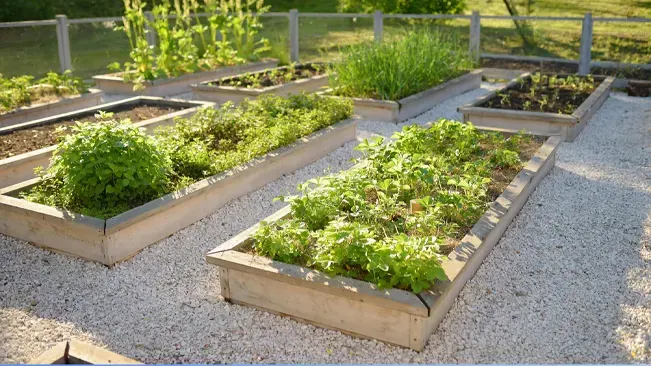
Choosing the ideal spot for a vegetable garden is akin to selecting prime real estate; location is paramount. Once you’ve identified the perfect sunny plot that offers the best exposure to natural elements, you can then tailor the size and style of your garden to suit your personal preferences and the needs of your plants. This careful planning sets the foundation for a thriving garden that complements both your lifestyle and your culinary aspirations.
- Sunlight: Most vegetables require at least six hours of direct sunlight per day. Choose a location that provides ample sun exposure for robust growth.
- Soil Quality: Fertile, well-drained soil is essential. Conduct a soil test and amend the soil as needed to provide the right balance of nutrients.
- Water Access: Ensure your garden is near a water source. Consistent and even watering is crucial for vegetable growth, especially during dry periods.
- Space Planning: Consider the space each plant will need to grow, both in width and height. This includes understanding the mature size of the plants and leaving enough room between them for air circulation and maintenance.
- Garden Layout: Decide on a garden layout that fits your space and meets your needs, whether it’s traditional row planting, raised beds, or container gardening.
Vegetable Garden Layouts
Whether you have a sprawling lawn or a cozy backyard, these versatile layout options are tailor-made to suit any space, offering ideal solutions for gardens of every size and shape.
Container Gardening

Container gardening offers a versatile solution for growing vegetables, herbs, and flowers in limited spaces such as balconies, patios, or urban gardens. It allows for gardening in areas without traditional garden beds, making it ideal for those living in apartments or homes with little to no yard space.
One significant advantage of container gardening is the control it offers over the growing environment. Containers ensure better soil quality management and drainage, reducing the risk of soil-borne diseases. Additionally, they can be moved to optimize sun exposure or shelter plants from harsh weather conditions.
Creative possibilities abound with container gardening. A wide variety of containers can be used, from traditional pots and planters to repurposed objects like barrels, buckets, or even hanging baskets. This flexibility not only enhances the aesthetic appeal of your space but also allows for a personalized gardening experience.
Raised Garden Beds
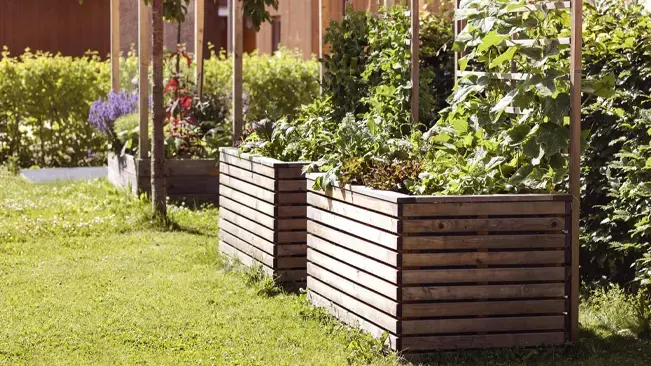
A raised garden bed, crafted from materials like wood, metal, or plastic, elevates above ground level and is filled with fertile gardening soil. Ideal for areas with rocky, nutrient-poor soil or excessive rainfall and drainage issues, it provides an optimal environment for plant growth.
Raised garden beds are particularly advantageous in regions with brief growing seasons, as the soil within them warms faster in spring, creating an ideal condition for cultivating early-season crops like strawberries, lettuces, and peas, enhancing growth and yield.
The design of raised beds simplifies weeding, making them accessible for individuals with mobility limitations, and ensures effortless harvesting of root vegetables, as the soil remains loose and un-compacted by foot traffic.
Vertical Gardens
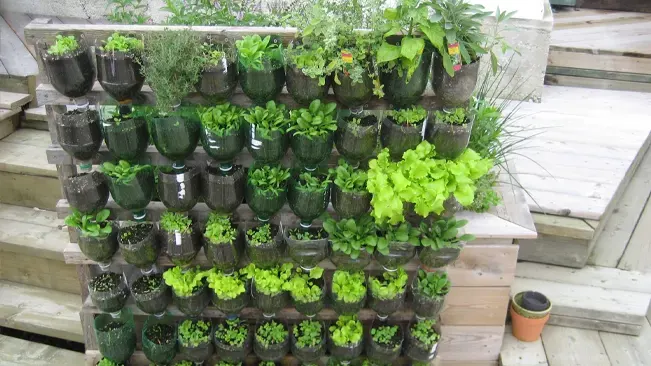
Vertical gardens are ideal for compact areas, offering a cost-effective gardening solution. Their design facilitates easy access and replanting, making them convenient for managing and refreshing crops as they reach maturity.
Vertical gardens can be crafted from landscape fabric or wood, or chosen from commercial plastic growing towers. While they need ample sunlight and quality soil, their major drawback is the need for frequent watering, sometimes twice daily.
In vertical gardens, it’s best to plant compact, fast-maturing varieties with shallow root systems, such as salad greens, baby kale, dwarf peas, bush beans, and various herbs, for optimal growth and yield.
Four-Square Gardens
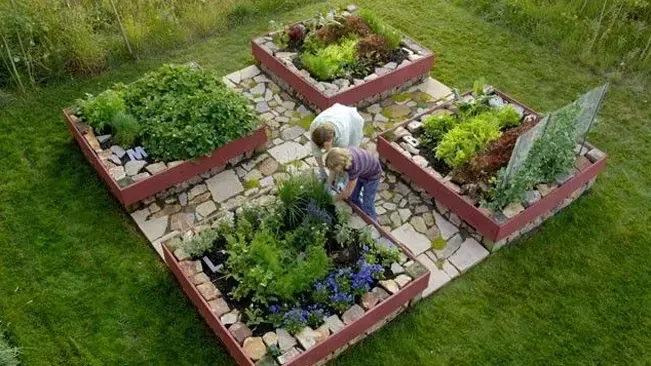
The four-square garden, featuring four raised beds delineated by crossing paths, echoes the classic design of early English cottage gardens, where quartets of rectangular plots were neatly sectioned off by two intersecting walkways, creating a structured and aesthetically pleasing layout.
Customizable to suit your space, the beds in a four-square garden, requiring only 6 to 8 inches of elevation, are ideal for cultivating diverse vegetables with convenient access to each.
Gardeners often enhance these beds by planting a fruit tree or a trellised vine in the center, rotating seasonal vegetables around them, often arranged in eye-catching patterns like diamonds, bordered by cascading herbs.
Square Foot Gardens
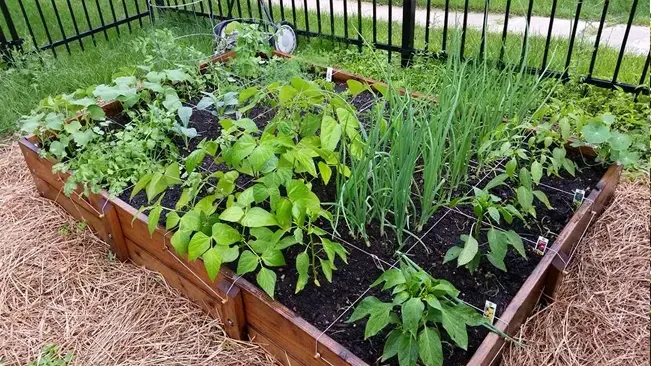
The square-foot garden concept enhances raised beds by dividing them into individual squares, allowing for efficient planting of different crops in compact areas. These 12 x 12″ sections, possibly built as separate containers, are interspersed with mulched walkways for easy access.
In square-foot gardens, it’s wise to select vegetable varieties that remain compact and don’t spread excessively, ensuring each plant has ample space to thrive without encroaching on its neighbors, maximizing the efficiency and yield of this unique gardening method.
Choose smaller varieties such as fingerling potatoes instead of bulky russets and cherry tomatoes over the larger beefsteak types for your square-foot garden. Cultivating lettuces and herbs is especially advantageous, as they allow for frequent harvesting and successive replanting, maximizing th
Gardening in Rows
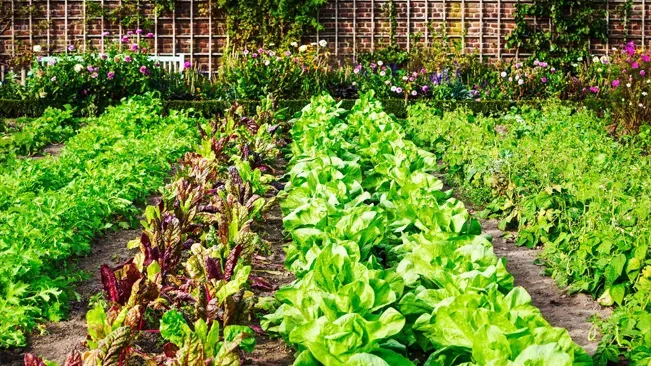
Establishing a row garden in a modest backyard is a seamless process. Start by thoroughly tilling the earth, breaking it down into a loose, friable texture. This crucial step fosters an ideal environment for planting, encouraging robust root development and setting the stage for a thriving, productive garden.
Ideally, prepare and enrich the soil of a row garden in the fall, or at least three weeks prior to spring planting. For compact row gardens, select highly productive plants like snap beans, tomatoes, radishes, lettuce, turnips, onions, greens, carrots, and peppers to maximize yield.
Maintaining your row garden is equally important for its success. Regular weeding, proper watering, and periodic fertilization are key to healthy growth. Additionally, implementing crop rotation and companion planting can enhance soil health and deter pests, ensuring your garden remains vibrant and productive season after season.
Homestead Gardens
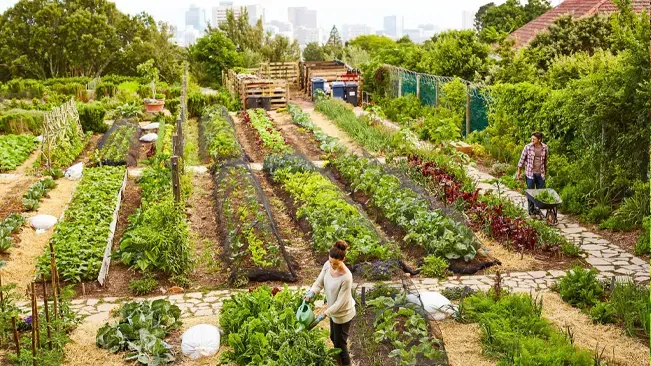
For those with a large family or a passion for preserving food, a homestead or large in-ground garden is perfect. Typically spanning at least a quarter-acre, these gardens can extend to an acre, providing ample space for a variety of produce.
The principles of successful row gardening apply here: rich soil, selection of productive vegetable varieties, diligent weed control, ample sunlight, and consistent moisture are key. With these elements, a homestead garden can yield a bountiful harvest.
When managing a large vegetable garden, certain tools and systems enhance efficiency and productivity. A gas-powered tiller is invaluable for soil preparation and weed control. Meanwhile, a drip irrigation system ensures optimal root moisture while preventing leaf and fruit diseases by keeping them dry.
Small In-Ground Gardens
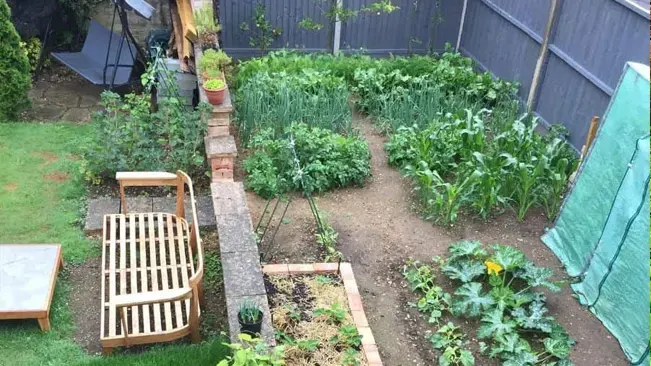
In a modest 10 x 10-foot area bathed in sunshine, you can cultivate an abundant vegetable garden suitable for a small family. Begin with fertile soil, adhering to row gardening techniques, and choose plants based on your preferences, be it leafy greens or root crops. Optimizing your space with both spring and fall plantings multiplies your yield.
A summer garden in this space can be quite diverse. Consider planting three trellised or caged indeterminate tomato plants, or mix it up with two tomatoes and one cucumber plant. Complement these with four eggplants, five pepper plants, and a row of 12 bush bean plants for a varied and plentiful harvest.
Choosing Plants for Vegetable Gardens
The choice of vegetable seedlings or seeds crucially influences your garden’s design. Begin by assessing your family’s vegetable preferences, your area’s climate, the length of the growing season, and the anticipated size of mature vegetable plants. This planning stage ensures a garden tailored to your specific environmental conditions and culinary tastes.
Certain vegetables, like corn, demand considerable space due to their large growth habit, similar to the expansive spread of many tomato and melon varieties. Meanwhile, beans and peas often require staking to elevate them off the soil, aiding in disease prevention and promoting healthier growth.
In gardens where space is at a premium, companion planting becomes an invaluable tactic. This method allows you to create optimal growing conditions for a variety of plants. For example, tomatoes thrive when planted alongside basil, carrots, cucumbers, and squash, forming a beneficial three-way partnership that maximizes space and plant health.
Vegetable Garden Design Tips
- Start with a Plan: Before planting, design a detailed garden layout, considering sunlight exposure, plant sizes and habits, and maintenance access to optimize space and achieve a cohesive arrangement.
- Soil is Key: Invest in enriching your soil. Healthy, nutrient-rich soil is the foundation of a productive garden. Conduct a soil test and amend your soil with compost, manure, or other organic matter to improve fertility and drainage.
- Optimize Sun Exposure: Ensure most vegetables receive at least six hours of sunlight by observing garden patterns and strategically positioning taller plants to avoid shading others.
- Water Wisely: Utilize efficient watering systems like drip irrigation or soaker hoses to deliver water directly to roots, conserving water and minimizing leaf disease spread.
- Consider Companion Planting: Use companion planting to enhance garden health and yield; certain plants, like marigolds near tomatoes, repel pests and improve soil nutrients.
Frequently Asked Questions (FAQs)
- What is the best layout for a vegetable garden?
- The ideal vegetable garden layout varies with your space, sunlight availability, and vegetable choices; consider raised beds, row gardening, or square foot gardening accordingly.
- The ideal vegetable garden layout varies with your space, sunlight availability, and vegetable choices; consider raised beds, row gardening, or square foot gardening accordingly.
- How much space do I need between rows in a vegetable garden?
- Space between rows should be enough for you to move comfortably for maintenance and harvesting, typically around 18-24 inches, but this can vary with the type of vegetables planted.
- Can I mix flowers and vegetables in the same garden layout?
- Yes, many gardeners mix flowers and vegetables. Flowers can attract pollinators and beneficial insects, and some, like marigolds, can even deter pests.
- Yes, many gardeners mix flowers and vegetables. Flowers can attract pollinators and beneficial insects, and some, like marigolds, can even deter pests.
- What vegetables should not be planted together?
- Some vegetables can hinder each other’s growth when planted together. For example, tomatoes should not be planted with potatoes or cabbage, as they can encourage disease spread among them.
- Some vegetables can hinder each other’s growth when planted together. For example, tomatoes should not be planted with potatoes or cabbage, as they can encourage disease spread among them.
- How do I plan a vegetable garden for year-round harvesting?
- To achieve year-round harvesting, practice succession planting and choose vegetables suited to different seasons. Also, consider using greenhouses or cold frames to extend the growing season.

Charles Hayes
Forestry AuthorI'm Charles Hayes, I bring over 15 years of specialized expertise in landscaping and woodworking, blending artistic design with sustainable environmental stewardship. My career, fueled by a profound passion for the natural world, encompasses extensive education and hands-on experience in creating harmonious, eco-friendly outdoor spaces and responsibly managing forest resources. Recognized for my professional standing, I am committed to continuous learning and certification in cutting-edge practices. My expertise is not only reflected in my work but also in my contributions to community projects, educational workshops, and collaborations with industry leaders. As an authoritative voice in my field, I strive to share knowledge and promote environmentally conscious approaches, making me a trusted resource in landscaping and forestry.





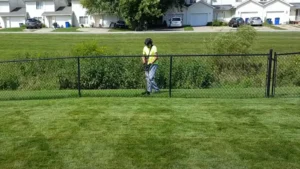







Leave your comment